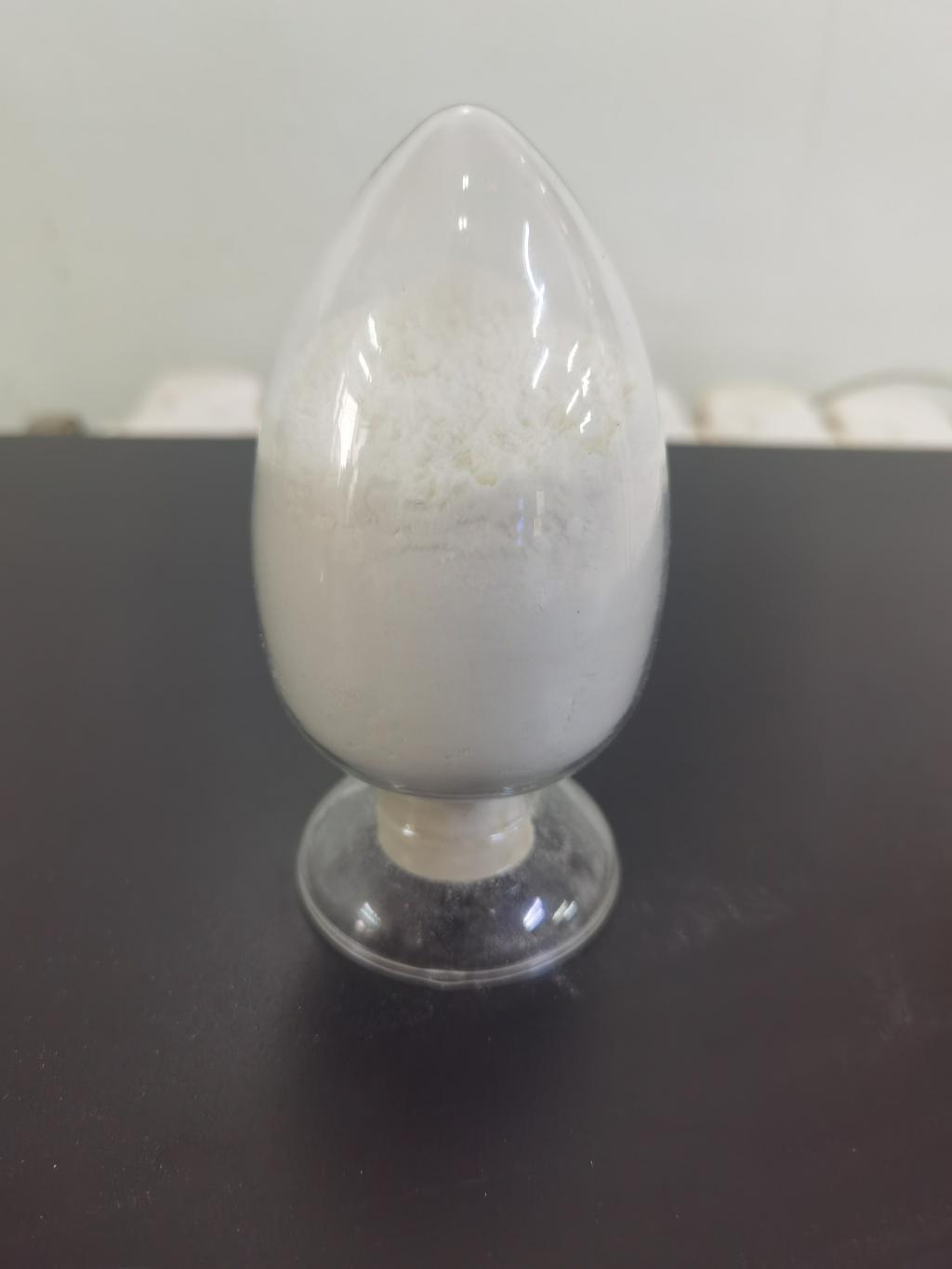Tel:+8618231198596

News
 CONTACT
CONTACT
 CONTACT
CONTACT
- Linkman:Linda Yao
- Tel: +8618231198596
- Email:linda.yao@dcpharma.cn
- Linkman:CHARLES.WANG
- Department:Overseas
- Tel: 0086 0311-85537378 0086 0311-85539701
News
Current Position:
Home >
News
>ε-Polylysine Hydrochloride: A Novel Approach to Combat Biofilm Formation.
ε-Polylysine Hydrochloride: A Novel Approach to Combat Biofilm Formation.
TIME:2024-06-03
Understanding ε-Polylysine Hydrochloride:
ε-Polylysine hydrochloride, also known as ε-Poly-L-lysine or EPL, is a cationic biopolymer produced by certain strains of bacteria, particularly Streptomyces albulus. It consists of multiple lysine residues linked by peptide bonds, forming a linear polymer chain with a net positive charge. ε-Polylysine hydrochloride is water-soluble, biodegradable, and non-toxic, making it suitable for various applications in healthcare, food preservation, and industrial processes. It has been approved as a food additive in many countries and is generally recognized as safe (GRAS) for human consumption.
Mechanisms of Action Against Biofilms:
ε-Polylysine hydrochloride exhibits multiple mechanisms of action against biofilms, making it an effective antimicrobial agent for inhibiting biofilm formation and eradicating established biofilms:
Disruption of Cell Membrane: ε-Polylysine hydrochloride interacts with the negatively charged bacterial cell membrane, leading to membrane disruption and permeabilization. This disrupts membrane integrity, causing leakage of cellular contents and eventual cell death. By targeting the cell membrane, ε-Polylysine hydrochloride effectively inhibits microbial adhesion and colonization, preventing biofilm formation.
Inhibition of Extracellular Polymeric Substances (EPS) Production: Biofilm formation relies on the secretion of EPS components, such as polysaccharides, proteins, and DNA, which provide structural support and protection to microbial communities. ε-Polylysine hydrochloride interferes with EPS production and assembly, inhibiting biofilm maturation and stability. This disrupts the biofilm architecture and makes the microbial cells more susceptible to antimicrobial agents and host immune responses.
Quorum Sensing Inhibition: Quorum sensing is a cell-to-cell communication mechanism used by bacteria to coordinate gene expression and regulate biofilm formation. ε-Polylysine hydrochloride has been shown to interfere with quorum sensing signaling pathways, disrupting bacterial communication and inhibiting biofilm development. By targeting quorum sensing, ε-Polylysine hydrochloride can prevent the formation of dense and mature biofilms, reducing their resistance to antimicrobial treatments.
Applications in Combating Biofilm Formation:
Healthcare Settings: In healthcare settings, biofilm formation on medical devices, such as catheters, implants, and prosthetics, can lead to device-associated infections, including urinary tract infections, surgical site infections, and implant-related infections. ε-Polylysine hydrochloride can be incorporated into medical device coatings or used as a disinfectant to prevent biofilm formation and reduce the risk of device-related infections.
Food Industry: In the food industry, biofilm formation on food processing equipment and surfaces can lead to foodborne illness outbreaks, product contamination, and spoilage. ε-Polylysine hydrochloride can be applied as a surface disinfectant or added to food packaging materials to inhibit microbial growth and prevent biofilm formation. It can also be used as a preservative in food products to extend shelf life and improve food safety.
Water Treatment: In water treatment systems, biofilm formation in pipelines, filters, and storage tanks can lead to reduced water quality, corrosion, and fouling. ε-Polylysine hydrochloride can be used as a biocide or biofilm inhibitor in water treatment processes to control microbial growth and maintain system performance. It can also be used in combination with other disinfection methods, such as chlorination or ultraviolet (UV) irradiation, to enhance microbial control and prevent biofilm formation.
Industrial Processes: In industrial processes, biofilm formation in cooling towers, heat exchangers, and fermentation tanks can lead to reduced efficiency, increased energy consumption, and product contamination. ε-Polylysine hydrochloride can be used as a biocide or antifouling agent to inhibit biofilm formation and maintain process integrity. Its non-toxic and biodegradable nature makes it an environmentally friendly solution for controlling microbial growth in industrial settings.
Future Prospects and Challenges:
Despite its promising antimicrobial properties, the widespread adoption of ε-Polylysine hydrochloride faces several challenges, including:
Regulatory Approval: While ε-Polylysine hydrochloride is approved for use as a food additive in many countries, regulatory approval for its use in healthcare and industrial applications may vary. Continued research and regulatory advocacy are needed to facilitate its broader acceptance and adoption in these sectors.
Cost and Scalability: The production of ε-Polylysine hydrochloride on a large scale may pose challenges in terms of cost-effectiveness and scalability. Research into more efficient production methods and cost-effective purification processes is needed to make ε-Polylysine hydrochloride more accessible for industrial applications.
Resistance Development: Like other antimicrobial agents, the potential for microbial resistance to ε-Polylysine hydrochloride remains a concern. Continued monitoring of microbial susceptibility and resistance patterns, as well as research into combination therapies and alternative antimicrobial strategies, will be essential to mitigate the risk of resistance development.
Formulation Challenges: Incorporating ε-Polylysine hydrochloride into various formulations, such as coatings, disinfectants, and preservatives, may present formulation challenges related to stability, solubility, and compatibility with other ingredients. Formulation optimization and compatibility testing will be necessary to ensure the efficacy and safety of ε-Polylysine hydrochloride-based products.
Despite these challenges, the future prospects of ε-Polylysine hydrochloride in combating biofilm formation are promising. Continued research and development efforts are expected to overcome existing barriers and unlock the full potential of ε-Polylysine hydrochloride as a versatile and effective antimicrobial agent.
Conclusion:
ε-Polylysine hydrochloride represents a novel approach to combat biofilm formation and control microbial growth in various applications, including healthcare, food safety, water treatment, and industrial processes. Its unique properties, including broad-spectrum antimicrobial activity, non-toxicity, and biodegradability, make it an attractive alternative to conventional antimicrobial agents. By targeting multiple mechanisms of action, including cell membrane disruption, EPS inhibition, and quorum sensing interference, ε-Polylysine hydrochloride effectively inhibits biofilm formation and reduces the risk of microbial contamination and infection.
As research into ε-Polylysine hydrochloride continues to advance, it holds great promise for addressing the challenges associated with biofilm-related infections, foodborne illnesses, and industrial biofouling. Regulatory approval, cost-effectiveness, formulation optimization, and resistance management will be key areas of focus for realizing the full potential of ε-Polylysine hydrochloride in combating biofilm formation and improving public health and safety.
- Tel:+8618231198596
- Whatsapp:18231198596
- Chat With Skype







